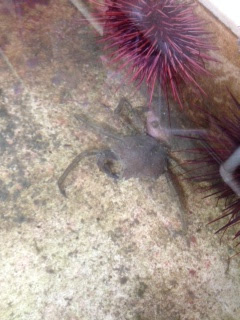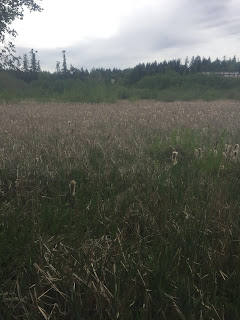Shannon Point field trip
I took the picture below in the laboratory. We can observe a red sea urchin (strongylocentrotus franciscanus) and a European green crab (carcinus maenas).
While the red sea urchin was simply hanged on the aquarium's wall, the green European crab was moving around. Perhaps, the crab was looking for food.
Crabs are important species in the ecosystem as they play an important role of decomposer. Indeed, they help cleaning up the intertidal zone and the ocean by eating the dead organisms. They're important scavengers. Besides, many other species as birds, fishes and other sea mammals feed themselves by eating crabs.
Concerning the red sea urchins, they help reducing the algae invasion on beaches by their grazing. Moreover, many other marine species rely on them in the food chain. Indeed, red sea urchins have many predators.
I really enjoyed the vessel trip. I think this was actually my favorite part. We learned a lot about the marine organisms that we collected through the fishing net.
The Pacific Northwest is a very fragile coast that we must protect. When I saw how many different organisms the captain's experimental fishing net could catch, I realized that the industrial ones were capturing way too many organisms compared to the time they would need to breed and survive. This is actually terrifying, and made me realize how fishing industries could negatively affect the ocean's biodiversity.
One question that came up in my mind during the visit is: What are some actual researches made by the scientists/ researchers in the Marine Research Center? Are the organisms kept in the laboratory subjects to actual researches?
Green European crab, and Red sea urchin in laboratory




Comments
Post a Comment